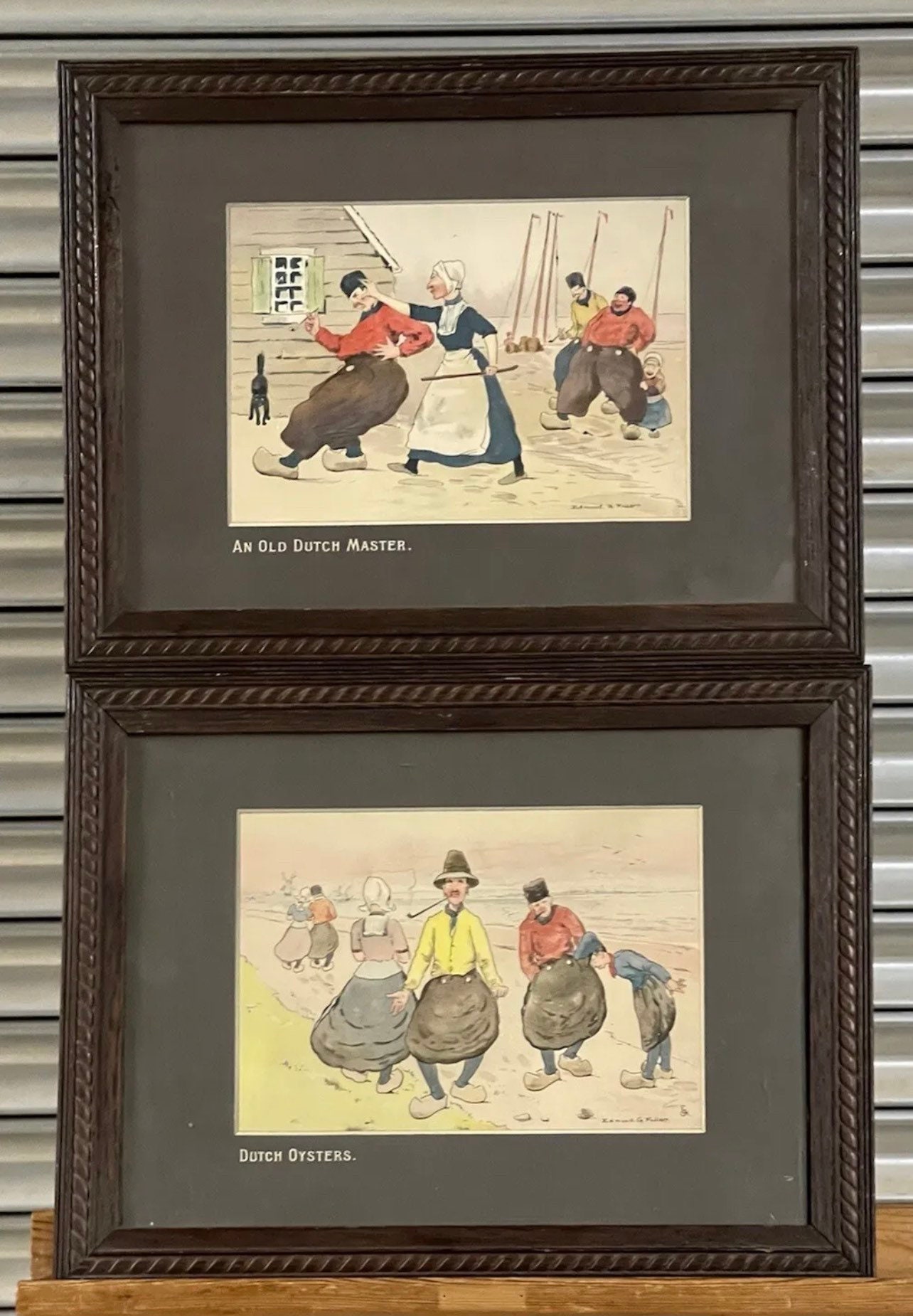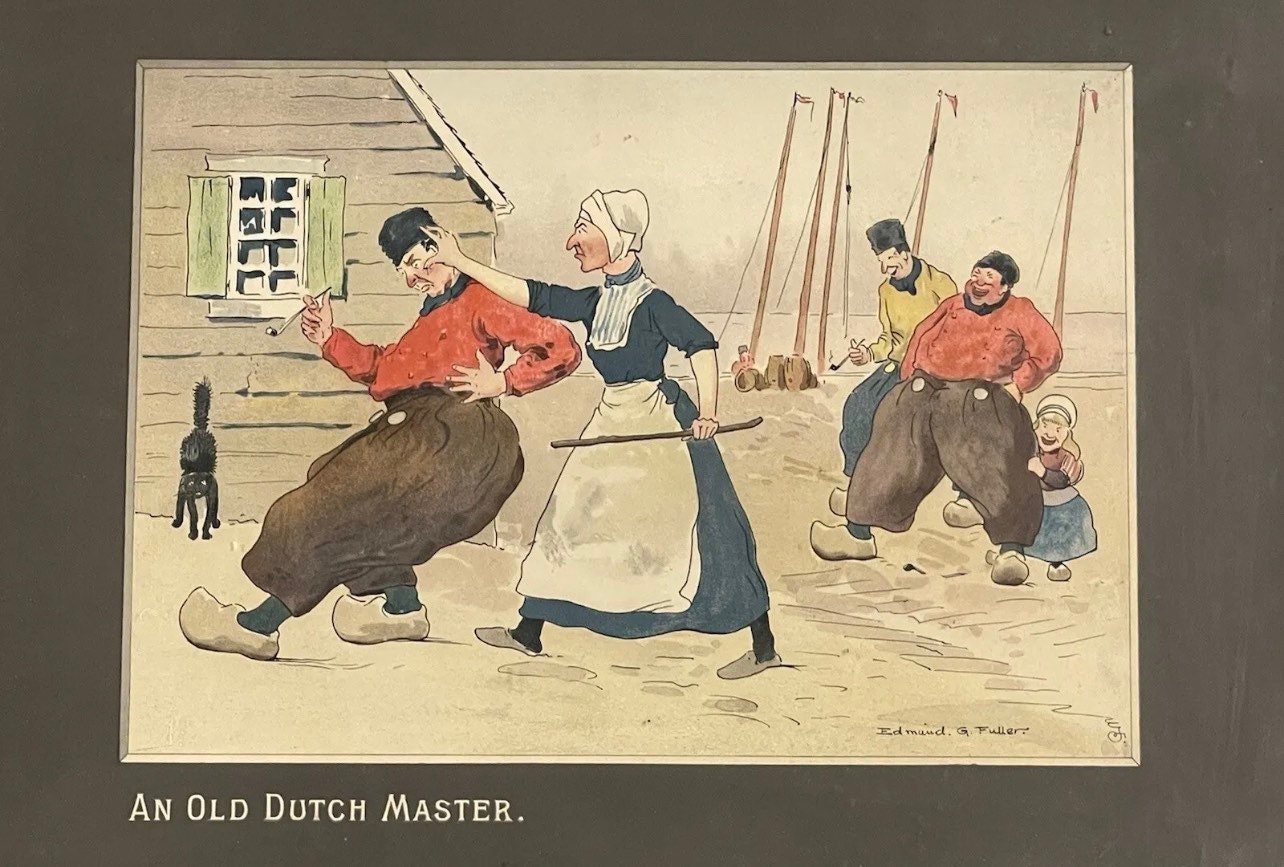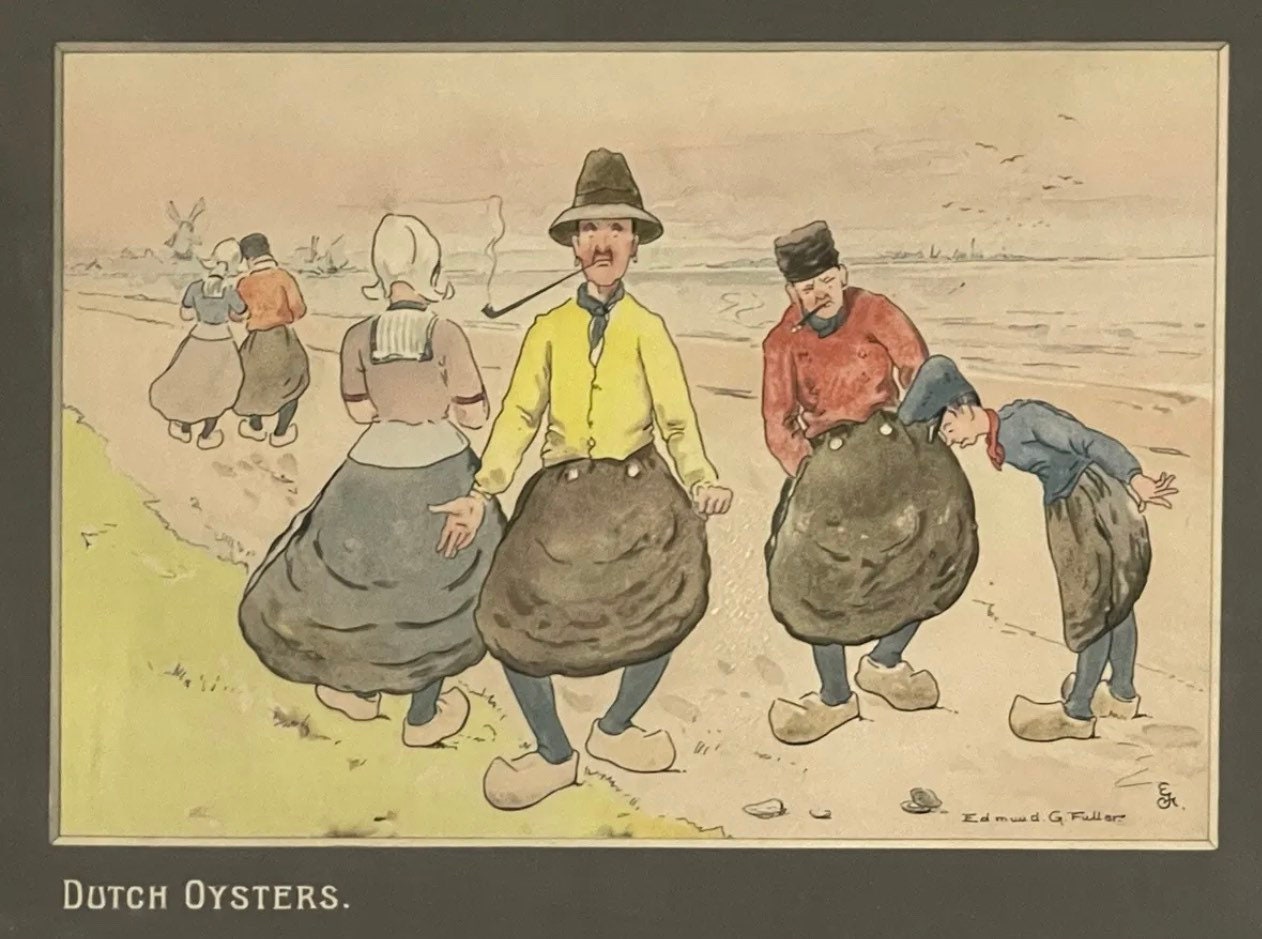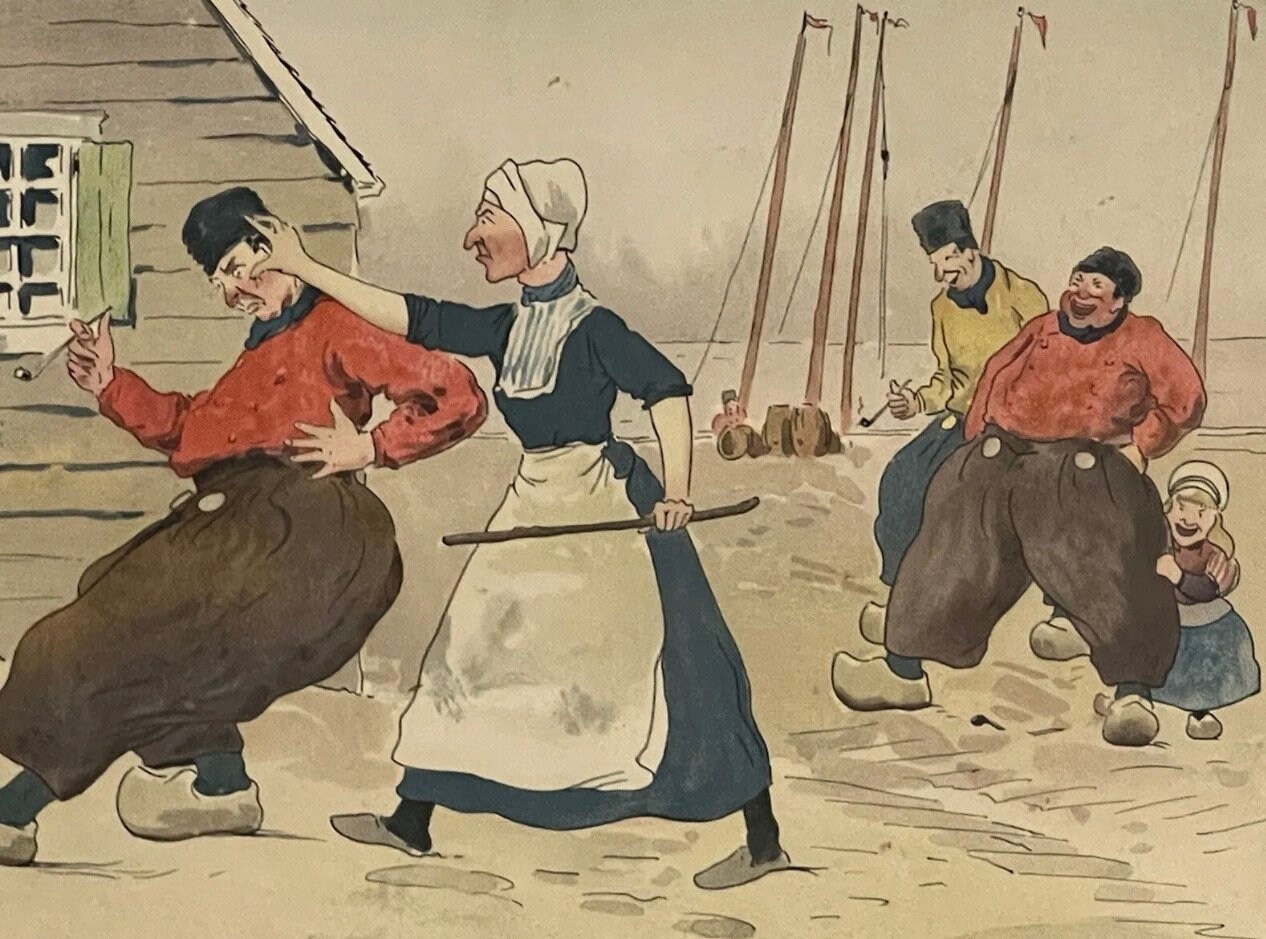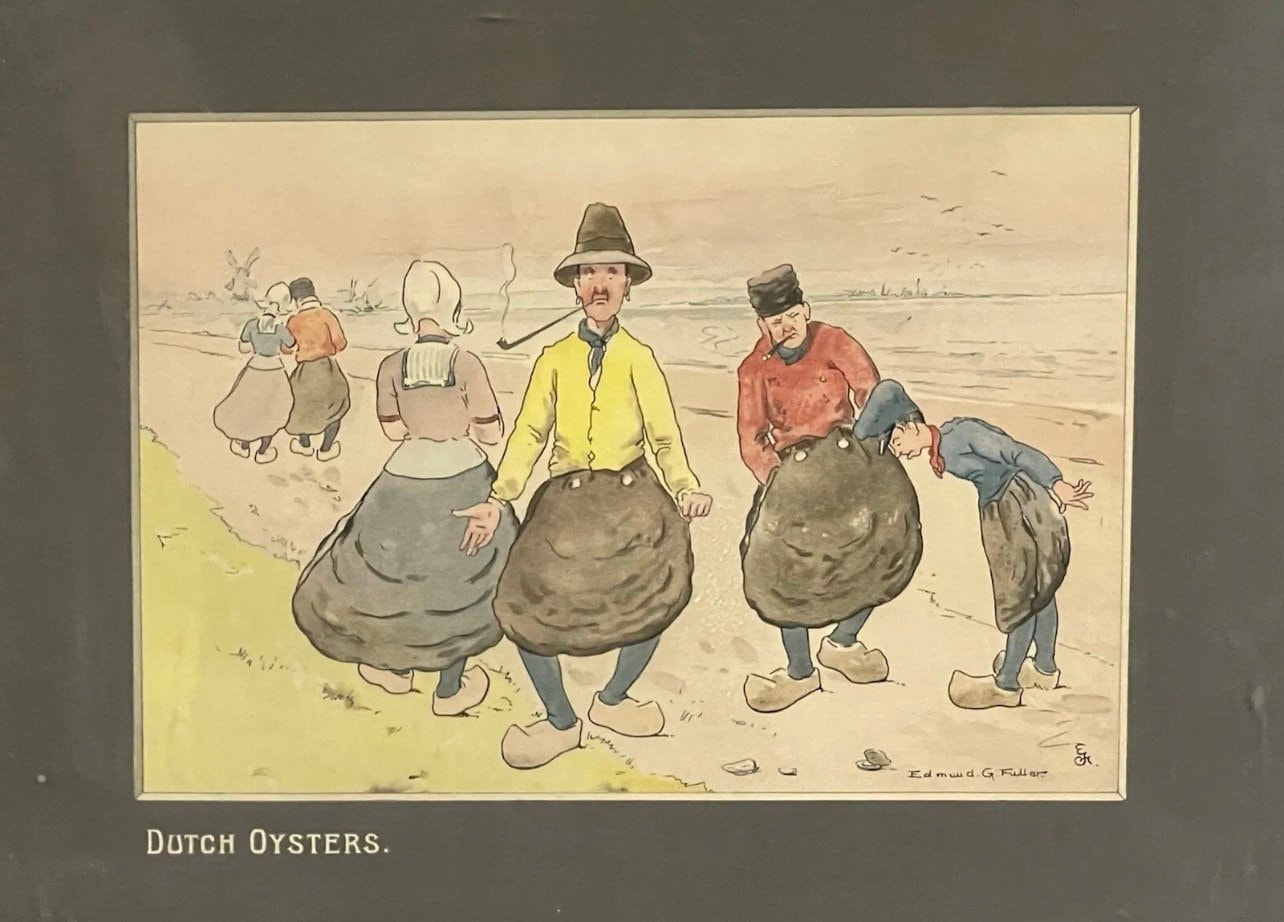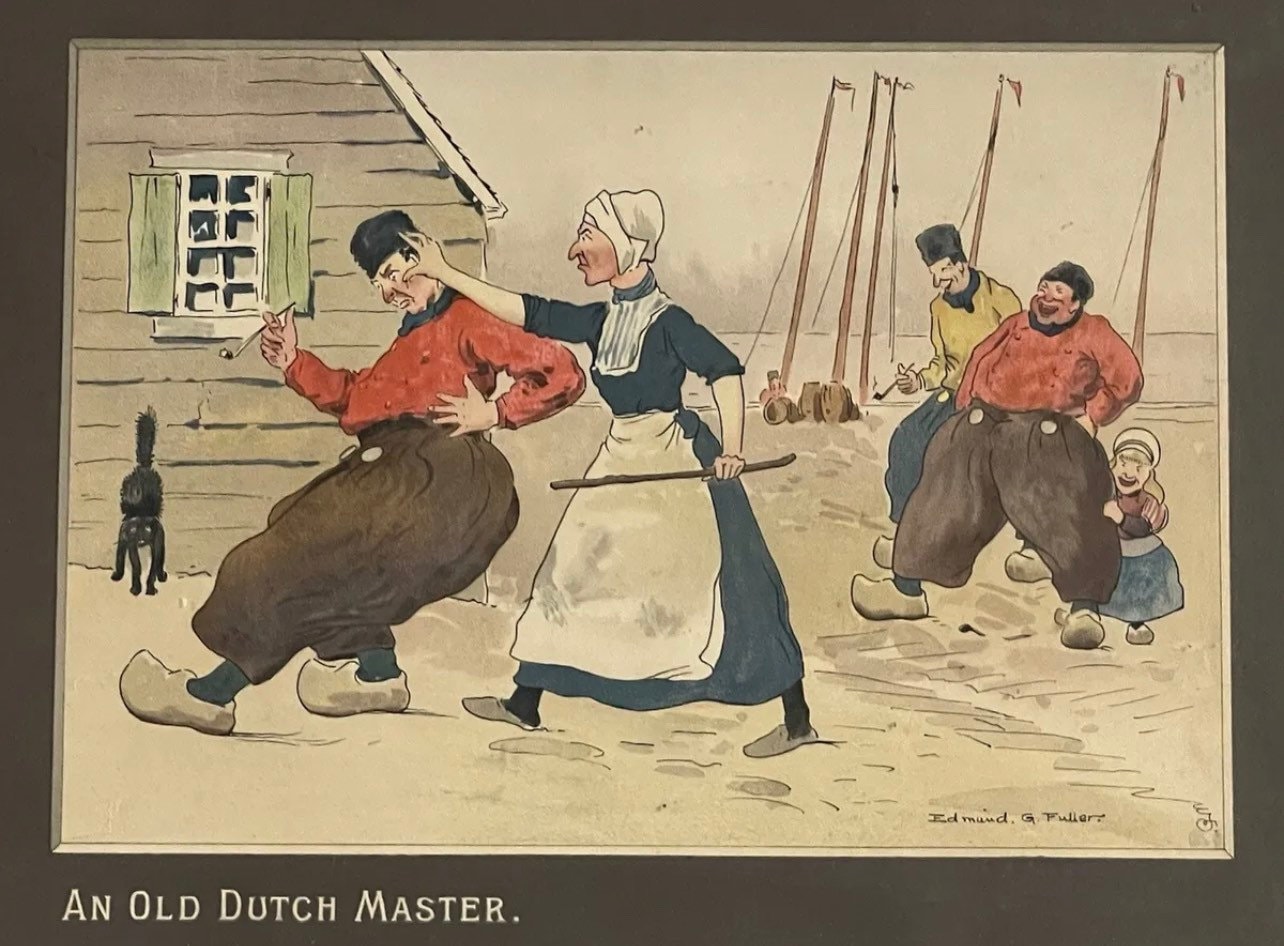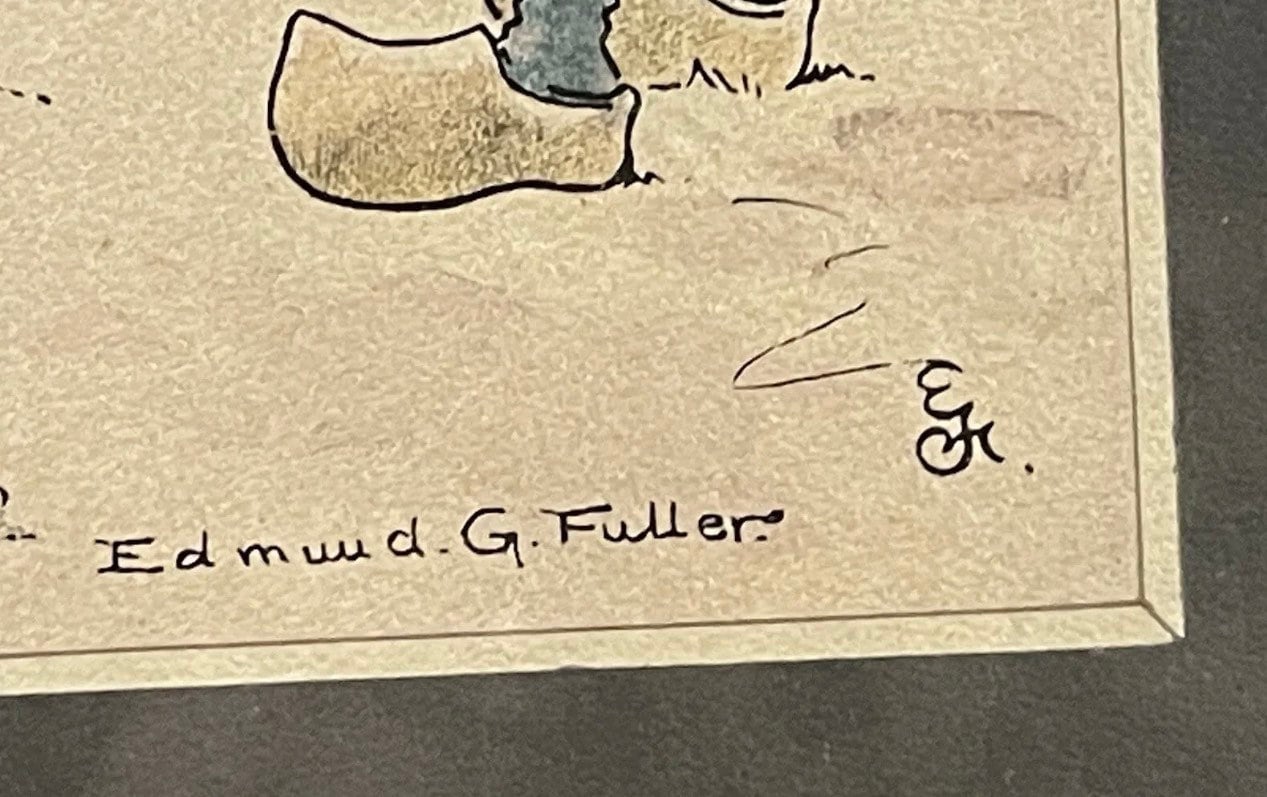Edmund G Fuller, Dutch Oysters and Old Dutch Master Framed and Glazed Lithographs
$132.64
Edmund G Fuller, Dutch Oysters & Old Dutch Master Framed & Glazed Lithographs.
(1858-1940)
The frames measure approx 44 x 34cm
On his death in 1940, Fuller was described as “painter, architect, comic artist and metal worker” and he distinguished himself in all these disciplines but it was as a marine artist that he achieved the highest renown. The son of a military father, who became a General, Fuller was born in Brompton, London and educated at Sandhurst. He married Emma Wing, a Suffolk girl, in 1882 and they lived initially in London. He first started exhibiting in 1888. Fuller came to St Ives in 1892, he and his wife taking part in the Carnival Masquerade held that March. They settled in 1 Barnoon Terrace and he immediately took a studio on the harbour beach, which was to be his workplace throughout his time in St Ives. This was a large space, which enabled him to have a fine lathe and carpenter’s bench at one end, where he did his metal working, and his easels, paints and canvases by the window overlooking the harbour at the other.
Before attributing Fuller’s undoubted success purely to his willingness to pander to Victorian taste, it should also be noted that he was one of the first St Ives artists to exhibit pure seascapes at the RA. As early as 1894, a work simply called Surf was illustrated as a Picture of the Year and a number of Fuller’s RA exhibits later in the decade, such as Sun-Kissed Foam (RA 1899) were pure seascapes of huge dimensions. Therefore, he was far more daring in this respect than Olsson, who continued to include boats and figures in his major works until the turn of the century. After 1906, Fuller concentrated almost entirely on seascapes, capturing fascinating lighting effects on surf and in the sky. The smaller examples of these works tend to be the paintings that pass through the salerooms. These are attractive works that generate much interest. His major exhibition pieces, nearly all of which were six footers, are, however, rarely seen, although Plymouth City Art Gallery have A Last Hope (RA 1911), showing a lifeboat setting off to a wreck near Lundy Island. It is, however, his masterful treatment of the sea and the bright shaft of light in the distance that are the key elements in the work. His obituarist commented, “He was much envied by other marine painters in the Colony, as he was the only sea artist who could sell his work in his studio, running often into three figures. I have known him make as much as £40 each for a couple of watercolours, painted from black lead sketching done at Clodgy. And, by the way, his pencil notes were beautiful works of art.” This can be seen from the series of drawings of old St Ives, which Fuller published in 1905 under the title In and Around St Ives.
Fuller, (who was a founder member of the RWA,) is always mentioned as being a dapper little man of distinguished appearance, invariably wearing riding breeches, a corduroy coat and a Stetson hat. In 1913, he decided to move back into central St Ives, living at 6 Clodgy View. During the War, he worked in munitions and his paintings are rarely mentioned after the War, although he was represented in the Plymouth exhibitions of 1917 and 1922 and was a founder member of the New Print Society which had its inaugural exhibition at Lanham’s Galleries in 1923. In 1920, he was said to be busy illustrating a book on the Union Castle Line and its work during the war but this does not appear to have come to fruition. He seems to have left St Ives in the mid-1920s – he resigned from the Golf Club in October 1924 – and he spent his last years at Portishead, near Bristol. It is to be hoped that more of his major works surface so that his significant contribution to St Ives marine art can be properly celebrated.
We are grateful to David Tovey for generously sharing his research on Edmund Fuller with us.
Examples of his work are held at the Plymouth City Museum and Art Gallery.
Note for USA customers
N.B as of Aug 2025 USA has introduced new import duty tariffs which are charged regardless of however much the item costs (previously it was only charged on items over $800 but this has now changed).So please be aware there will be some increase costs on shipping to take into account the import duties. Please feel free to message me if you are interested in purchasing this or other items and need any additional information with regards to shipping costs.
Thank you
Frequently Asked Questions
Does OnlineAntiques Ship Worldwide?
In most cases we do ship overseas from the UK depending on size and weight. However if we haven’t listed a shipping cost to your country please message us as we are always happy to obtain an individual shipping price
How Quick Does OnlineAntiques Dispatch items ?
In most cases we dispatch within 48hrs and we use either a 24hr or 48hr signed for delivery service. If the item is large, such as an item of furniture then it will take 5-7days as we will need to arrange a private courier
Gift wrapping and packaging
We package our items extremely well to ensure fragile items and artwork arrive safely. If you would like your purchase gift wrapped then please add a message or message us directly with details. We are always happy to help as much as possible for that special occasion.
Multiple purchases
If you are purchasing multiple items and we can package together, we can reduce postage/shipping costs. Please message us direct ahead of your purchase so we can make the necessary postal adjustments to your purchases.

